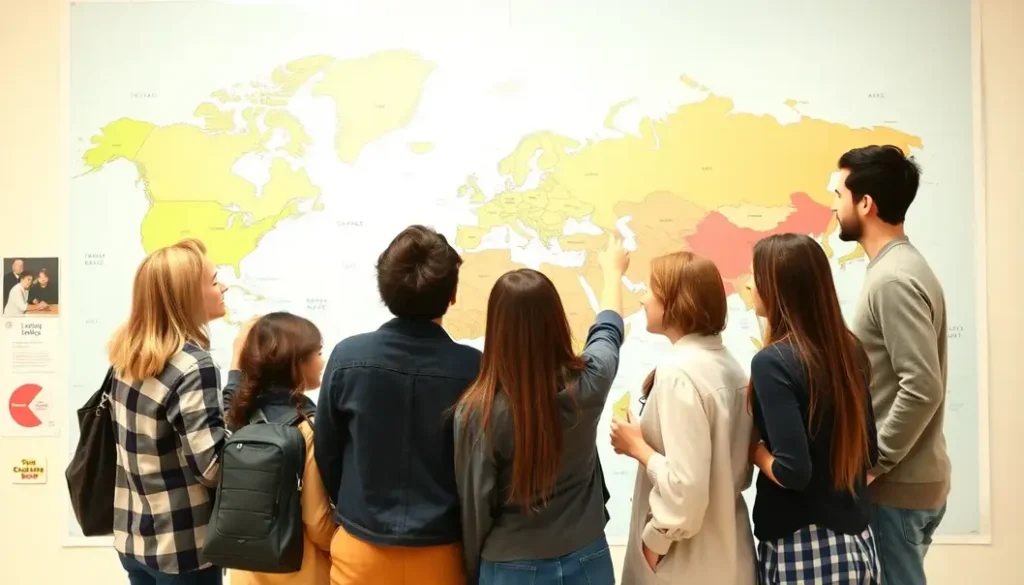Hey, Teen Travellers! Ready for a thrilling jet-setting adventure? Before you pack your bags and snap your passport selfies, there’s something you absolutely need to conquer: cultural etiquette! Whether you’re munching sushi in Japan or doing a cheeky bow in Thailand, knowing the local customs is your golden ticket to being the coolest, most respectful traveler around. Dive into this quick guide to transform from a tourist newbie to a savvy world explorer. Let’s embark on a journey to master the art of globetrotting with style and grace!
Greetings and Gestures: First Impressions Count!

Touch down in any country, and the first few seconds shape your adventure. Greetings and gestures hold the key to unlocking epic first impressions that ensure you’re off to a stellar start. When traversing the globe, embracing the rich tapestry of cultural norms requires more than mere words.
In many European countries, the handshake reigns supreme. A firm grip paired with eye contact exudes confidence and respect—qualities laudable in any setting. The handshake, while seemingly simple, varies from city to countryside. Germans may favor a solid shake, while the French might pair it with a kiss on each cheek, serving as a bridge to warmer interactions.
Venturing eastward, Thailand offers the enchanting ‘wai,’ a graceful gesture involving hands pressed together in prayer-like fashion, complemented by a slight bow. Understanding the level of the bow—whether slight or deep—stems from the social status or age of the person you’re greeting. This intricate custom speaks volumes about respect and societal harmony.
While Japan also embraces bowing, this silent but profound gesture reflects its own layers of custom. Bowing in Japan can convey everything from appreciation to apology or greeting, each degree and length of bow carrying distinct meaning. It becomes second nature for locals, yet for travelers, mastering even a simple 15-degree bow can make interactions more genuine.
Across the Atlantic, in places like Argentina, the abrazo, a warm hug shared among friends, signals immediate acceptance into the fold of family or close-knit comradeship. It goes deeper than initial meetings, marking friendship and the essence of camaraderie.
Travelers might be intrigued by more quirky customs, like New Zealand’s Maori ‘hongi,’ where two people press their noses and foreheads together, sharing the ‘breath of life.’ This intimate gesture transforms a meeting into a profound encounter.
For teens jet-setting around the globe, an awareness of these greeting variations becomes a social shield and key to new experiences. Mix up your repertoire with high-fives in some casual settings or adapt the casual nod observed in many urban environments, and you’ll find yourself fitting seamlessly into diverse cultural canvases.
With the flair to switch from a firm handshake to an elegant bow or a hearty abrazo, you’re equipped to handle any greeting that comes your way. This ability to adapt not only sparks initial connections but opens doors to deeper cultural exchanges that transform ordinary trips into extraordinary journeys.
Dining Do’s and Don’ts: From Sushi to Spaghetti

Food transcends mere sustenance—it’s a portal to the soul of a culture. Every country we visit offers a delightful array of culinary experiences. Yet, to truly appreciate these, one must understand their dining etiquettes.
In Japan, for example, the art of noodle slurping is a revelation. Contrary to what some might expect, letting out an audible slurp while enjoying a bowl of ramen or soba is seen as a compliment to the chef. The sound indicates savoring, a harmonious blend of noodles and broth that should be as loud as it is satisfying. Hesitate not, for a quiet noodle is an under-appreciated one.
Traveling to China, you quickly learn that wielding chopsticks requires finesse and respect. It’s imperative never to leave chopsticks standing upright in a bowl, particularly rice, as this resembles funerary rituals. Instead, place them on the holder provided. Practice makes perfect when it comes to picking up rice grains, but no fear—resting them appropriately is the first step in showing respect to your hosts.
In Spain, the charm of tapas bars introduces another layer of dining etiquette. Sharing, here, is essential; the idea is to order multiple plates and enjoy a variety together. It’s a casual setting often shared with friends and family, emphasizing community and communication over food. When invited to partake in this tradition, eagerness to try everything coupled with gentle conversation will enhance your experience.
Consider Italy, where the act of eating spaghetti can seem like a performance. Twirling pasta on a fork using a spoon is reserved for learning diners and not for those who wish to blend in Italian-style finesse. The goal? Neat twirls that are manageable, enjoying each mouthful without overwhelming yourself. The communal atmosphere of Italian dining often invites lingering discussions, respecting the art of savoring both food and conversation.
(Discover how you can create a welcoming atmosphere that encourages communal dining traditions in your living space)[https://foxcygifts.co/how-to-make-your-home-cat-friendly/].
Whether you’re at a sushi bar in Tokyo or a ristorante in Rome, understanding these dining customs will enrich your global experiences. Through respectful engagement with each nation’s traditions, you’ll not only master the art of eating but also demonstrate appreciation for diverse cultural nuances. With each table you sit at, let the manners you exhibit become a bridge connecting you to the world’s rich tapestry of culinary heritage.
Final words
Congratulations, cultural champions! You’re now prepped to rock the globe with your newly-acquired etiquette skills. Remember, respecting cultural differences not only enriches your experiences but also builds world harmony. Go out there and make waves with your respect, knowledge, and a sprinkle of teen charm. Safe travels, and keep spreading those good vibes!
Ready to become a cultural pro? Download our free guide on mastering travel etiquette now!
Learn more: https://www.example.com/travel-etiquette-guide
About us
Explore our comprehensive travel guides that teach you everything about cultural etiquette worldwide. Perfect for making your adventures memorable and respectful!

